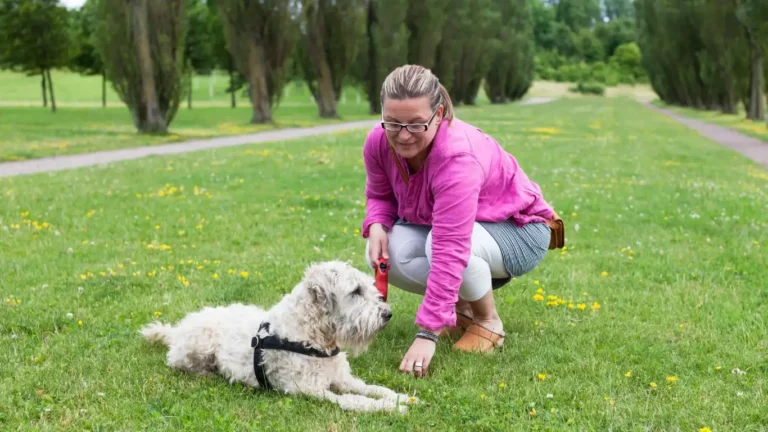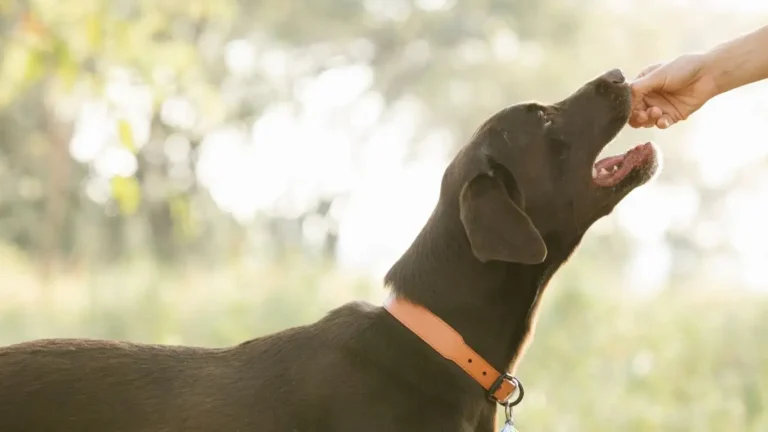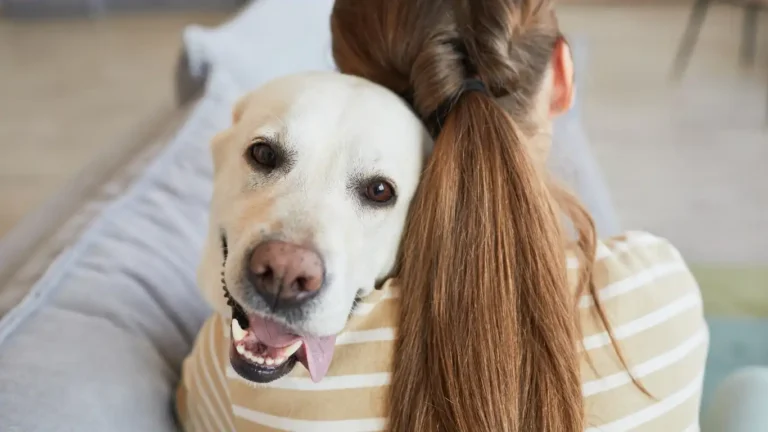Effective Techniques to Train Your Dog to Stop Barking When Left Alone
If you’re a dog owner, you’ve probably experienced the stress and frustration that comes with a dog that barks excessively when left alone. Whether it’s because of separation anxiety, boredom, or simply a lack of training, the noise can be overwhelming for both you and your neighbors. As a Canine-Assisted Therapy Trainer with years of experience, I’ve helped many dogs overcome this issue, and I’m here to share with you effective methods on how to train a dog to stop barking when left alone. This process requires patience, consistency, and understanding, but with the right techniques, you can create a peaceful environment for both you and your furry companion.
Understanding Why Dogs Bark When Left Alone
Before diving into training techniques, it’s crucial to understand why your dog is barking when left alone. Dogs are social creatures, and they thrive on companionship. Barking when left alone can be a sign of separation anxiety, fear, or simply an attention-seeking behavior. Here are a few common reasons why dogs bark when they’re left alone:
- Separation Anxiety: Dogs with separation anxiety become distressed when left alone. They may bark, whine, or even damage furniture or belongings in an attempt to escape.
- Boredom: If your dog doesn’t have enough mental stimulation or physical exercise, they may resort to barking as a way of entertaining themselves.
- Attention-Seeking: Some dogs bark when left alone simply because they’ve learned that barking gets them attention, whether it’s positive or negative.
- Fear or Loneliness: If your dog is new to being alone or has experienced traumatic events in the past, they might bark due to feelings of fear or loneliness.
Effective Strategies to Stop Barking When Left Alone
Now that we’ve identified the possible reasons behind your dog’s barking, let’s explore some practical and proven strategies to help your dog stop barking when left alone. These methods are based on my years of experience training dogs, and I’ve seen firsthand how they can make a significant difference in a dog’s behavior.
1. Gradual Desensitization
One of the most effective methods for training a dog to stop barking when left alone is gradual desensitization. This involves getting your dog accustomed to being alone in small increments of time, gradually increasing the duration as they become more comfortable. The key here is to go at a pace that your dog can handle without causing too much stress. Here’s how to get started:
- Step 1: Start by leaving your dog alone for just a few minutes, then gradually increase the time. Begin with 5 minutes and work your way up to longer periods, always ensuring your dog remains calm during the process.
- Step 2: Avoid making a big deal out of leaving or returning home. Dogs can pick up on emotional cues, so try to be as neutral as possible when you leave and return.
- Step 3: Reinforce calm behavior. When you return home, greet your dog calmly without excitement. If your dog is calm and quiet when you return, reward them with praise or a treat.

2. Create a Positive Association with Being Alone
Another strategy that works wonders is helping your dog associate being alone with something positive. This can be done through the use of food puzzles, toys, or treats that are only given when they’re left alone. This tactic helps to shift your dog’s focus away from the anxiety of being alone to something enjoyable.
For example, you can use interactive toys or food-dispensing puzzles that challenge your dog to work for their food. These activities provide mental stimulation and keep your dog engaged, making them less likely to bark. Over time, your dog will begin to associate being alone with something enjoyable, reducing their anxiety.

3. Counter-Conditioning to Reduce Anxiety
If your dog is barking due to separation anxiety, counter-conditioning can be a powerful tool. The goal of counter-conditioning is to change your dog’s emotional response to being left alone. Rather than feeling anxious or stressed, your dog learns to feel calm and relaxed when left alone.
To do this, start by giving your dog a special treat or favorite toy that they only get when you leave. This can be a high-value treat like peanut butter on a stuffed Kong or a puzzle toy filled with treats. The idea is to create a positive distraction that shifts their focus from the anxiety of being alone to the excitement of getting a special reward.
It’s important to be consistent with this technique, but over time, your dog will learn to associate your departure with something enjoyable, rather than something to fear.
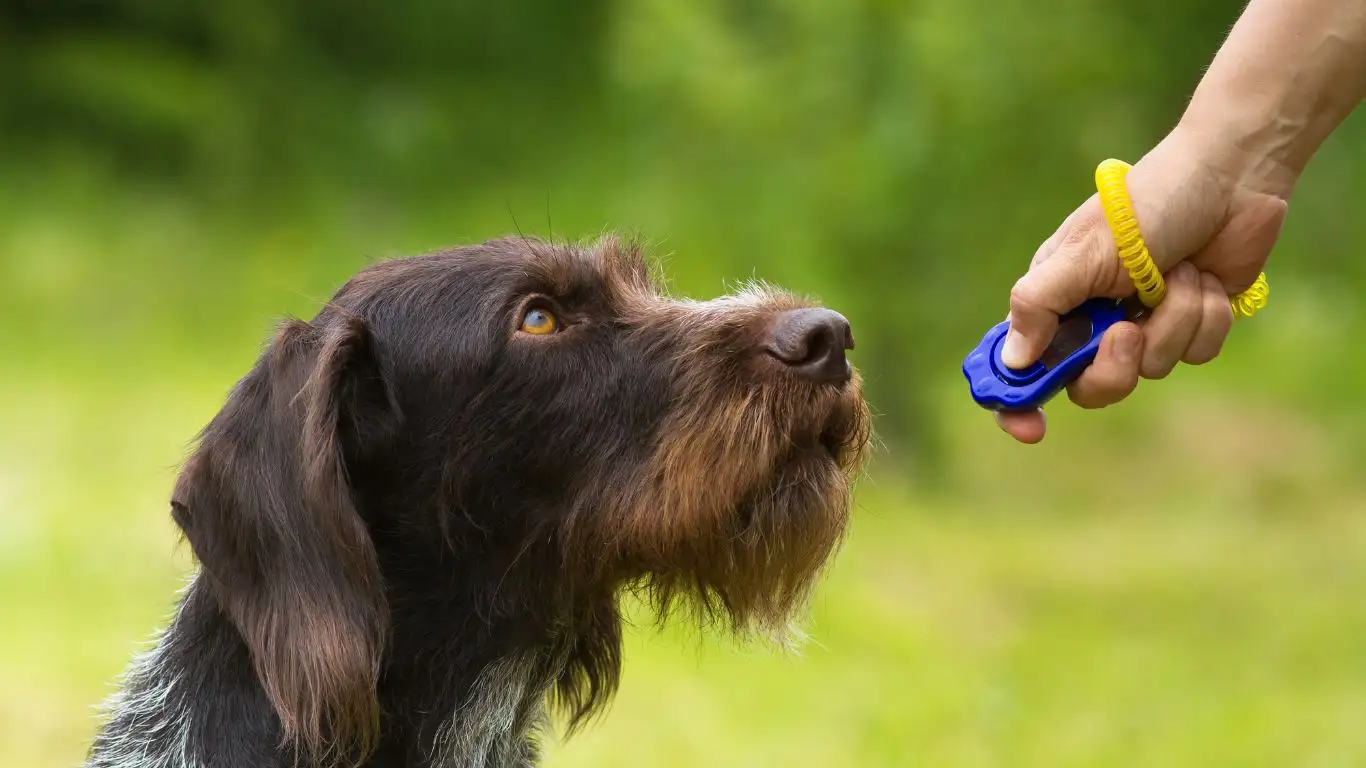
Consistency is Key
No matter which technique you choose, consistency is key. Dogs thrive on routine and structure, so make sure you’re consistent with your training efforts. This means implementing the same strategies each time you leave your dog alone, as well as maintaining a predictable schedule for feeding, walks, and playtime.
In my experience, the most successful outcomes come from a combination of patience, repetition, and consistency. If you stay committed to the training process, you’ll see a significant reduction in your dog’s barking over time.
Establish a Calm and Predictable Routine
One of the most important things I’ve learned in my years of training dogs is that they thrive on routine. Dogs are creatures of habit, and when they know what to expect, they’re far less anxious. This is especially true when you’re trying to train a dog to stop barking when left alone. Establishing a predictable daily routine can significantly reduce your dog’s anxiety and improve their behavior when they’re left alone.
By keeping consistent schedules for feeding, walks, playtime, and bathroom breaks, your dog will feel more secure and comfortable. A predictable routine allows them to understand when it’s time to rest and when it’s time to play, helping to alleviate boredom and anxiety.
For example, if you walk your dog every morning at the same time, they will come to expect that routine. If their daily activities are structured and predictable, they will feel less anxious when you leave because they know you’ll be back at the same time each day.
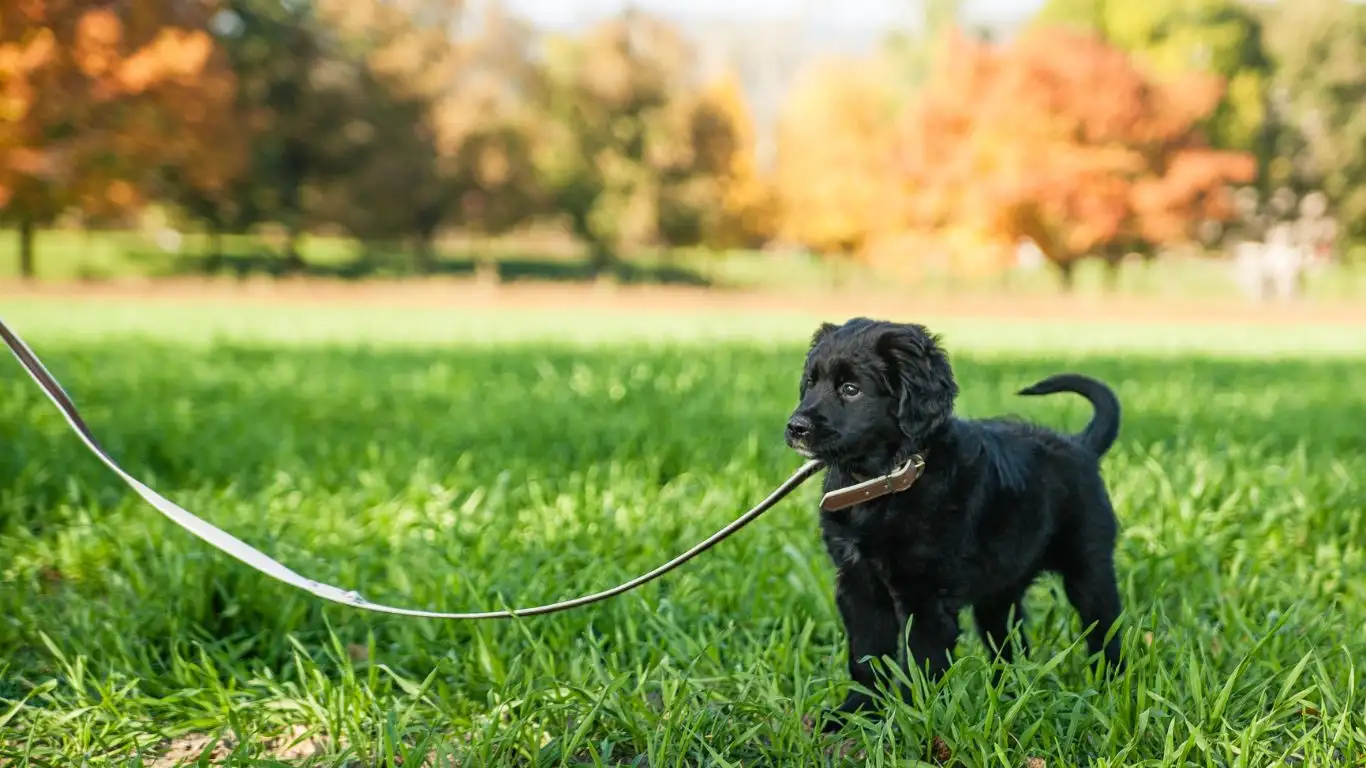
Using Crate Training as a Tool for Stopping Barking
Many dog owners have successfully used crate training to help their dogs stop barking when left alone. Crate training can provide a safe and comfortable space for your dog, and when done correctly, it can help alleviate anxiety and stop the barking behavior. However, it’s important to approach crate training the right way, ensuring that it becomes a positive experience for your dog rather than a source of stress.
The Right Way to Introduce Crate Training
Introducing your dog to the crate should be a gradual and positive process. Start by making the crate a comfortable and inviting space, with soft bedding, toys, and treats. Place your dog’s meals inside the crate, and encourage them to explore it on their own. Never force your dog into the crate, as this can create negative associations.
Once your dog is comfortable going into the crate voluntarily, you can start closing the door for short periods while they are inside. Gradually increase the time they spend in the crate, ensuring they remain calm before you leave. If your dog starts barking, avoid giving them attention until they stop. When they calm down, reward them with a treat or praise.
Crate training is not about punishment; it’s about providing your dog with a secure and safe space where they can relax when you’re away. When used properly, it can help reduce anxiety and stop barking when left alone.
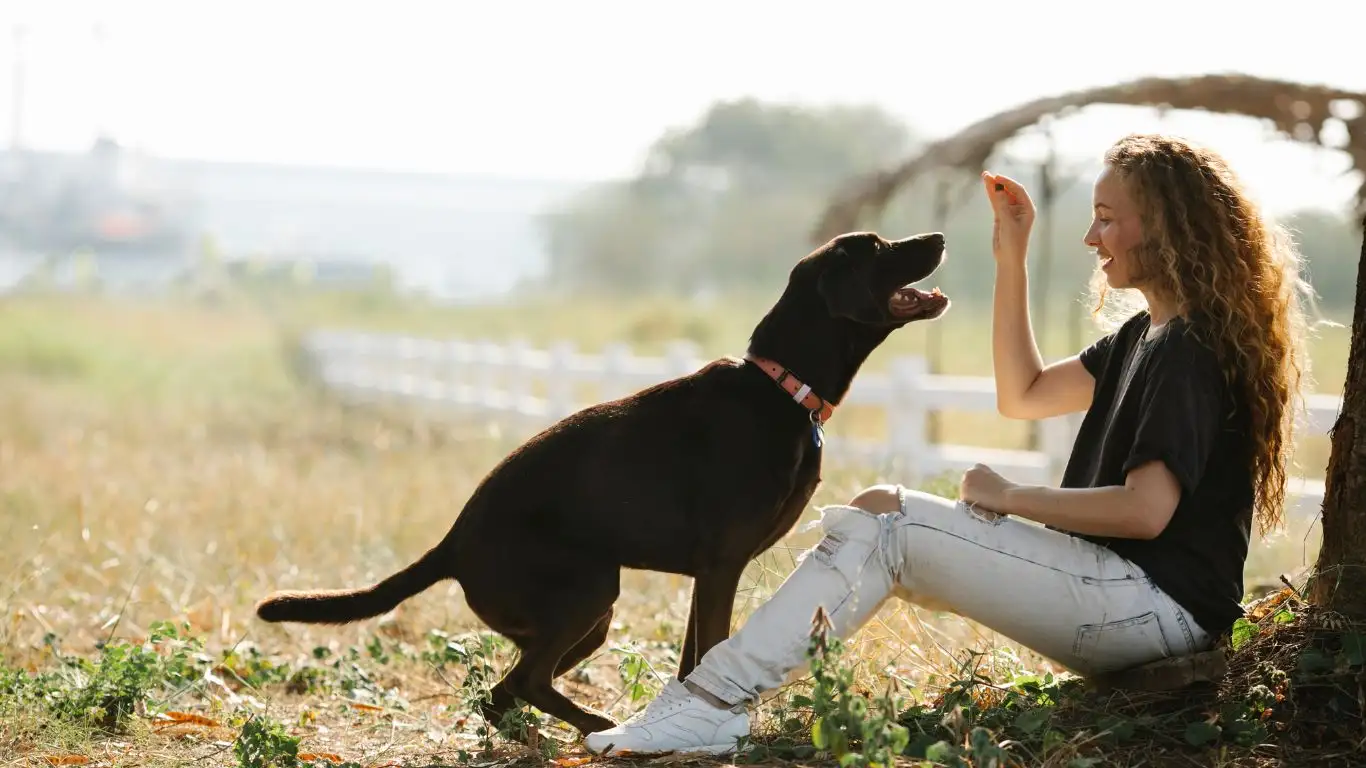
Exercise Before You Leave
Just like people, dogs need physical exercise to stay healthy and happy. If your dog has too much energy, they may bark excessively when left alone out of boredom or frustration. One effective strategy to stop barking is to make sure your dog gets plenty of exercise before you leave the house.
Taking your dog for a walk or playing an interactive game before leaving for the day helps burn off excess energy and gives them something to do during your absence. Physical activity not only helps with their energy levels but also has a calming effect on dogs, making them more likely to settle down and relax when you leave.
Whether it’s a brisk walk, a game of fetch, or even a quick run around the yard, taking the time to engage in physical activity before you leave can go a long way in curbing barking behavior.
Finding the Right Amount of Exercise
Every dog is different, so the amount of exercise your dog needs may vary based on their breed, age, and health. High-energy breeds like Border Collies and Labrador Retrievers may require more intense exercise, while smaller or less active breeds may need less. It’s important to gauge your dog’s needs and adjust accordingly. The goal is to tire them out enough that they’ll be calm and relaxed when you leave.
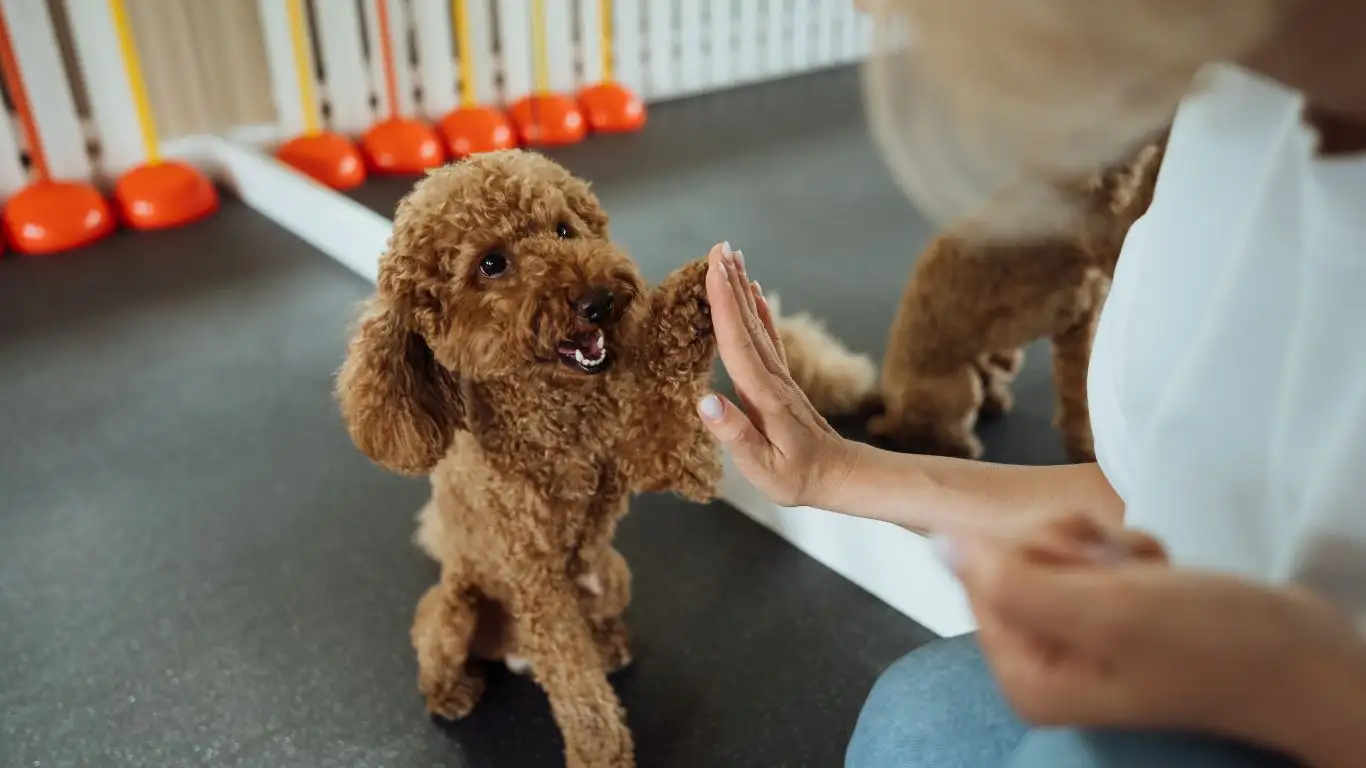
Use Technology to Your Advantage
In today’s world, technology can be a great tool to help train your dog to stop barking when left alone. There are several products and devices available that can assist with training and monitoring your dog’s behavior while you’re away.
Interactive Cameras
One useful gadget is an interactive camera, which allows you to monitor your dog’s behavior in real-time. Some cameras come with built-in features like treat dispensers, which allow you to reward your dog remotely when they’re being calm and quiet. This can be an excellent way to reinforce positive behavior and discourage barking.
Additionally, interactive cameras let you speak to your dog through the speaker feature. This can help reassure them that you’re still there, even when you’re not physically present. While this won’t solve the barking issue overnight, it can be an excellent tool for providing comfort and training consistency when you’re not home.
Anti-Barking Devices
Another technology-driven solution is anti-barking devices. These devices emit a sound or vibration when your dog barks excessively, which can help interrupt the behavior. While these devices should be used with caution, they can be an effective part of your training plan if used properly. It’s important to note that these devices should never be used as a replacement for proper training and should only be used in conjunction with positive reinforcement techniques.
Before using any technology in your training routine, make sure to consult with a professional trainer or behaviorist to ensure that the device is appropriate for your dog’s temperament and training needs.
Building a Strong Foundation with Positive Reinforcement
When training a dog to stop barking when left alone, positive reinforcement is one of the most powerful tools in your toolkit. This approach not only helps with reducing barking but also strengthens the bond between you and your dog. In my experience as a Canine-Assisted Therapy Trainer, I’ve found that dogs who are trained with positive reinforcement tend to be more confident, less anxious, and more responsive to cues over time.
The Power of Treats and Praise
Positive reinforcement involves rewarding your dog for displaying the behavior you want to see more of, in this case, being calm when left alone. One of the easiest ways to reinforce this behavior is through treats. Dogs love food, and when they’re rewarded with a tasty snack for being quiet, they quickly learn to associate their calm behavior with something positive.
But treats aren’t the only form of positive reinforcement. Praise, in the form of calm, enthusiastic words like “good boy/girl” or even a gentle pet, can also be an excellent motivator. The combination of verbal praise and treats can help solidify the desired behavior. It’s important to deliver the reward immediately after your dog exhibits calm behavior so they can connect the reward to the action.
Clicker Training: An Extra Layer of Precision
Clicker training is a popular method that can add precision to your positive reinforcement. It involves using a small device that makes a distinct “click” sound when pressed. When your dog displays the desired behavior, such as being quiet when you leave, you immediately click and then reward them with a treat. The clicker serves as a clear marker, helping your dog understand exactly what behavior earned the reward.
Clicker training is particularly effective for reinforcing behaviors like sitting, staying, or being calm in a crate, and it can be used to address barking when left alone. Just remember, like with all training, consistency is key. Use the clicker to mark quiet behavior every time, and pair it with treats or praise to create a positive association with calmness.

When to Seek Professional Help
While many dogs respond well to the techniques I’ve outlined, there are times when the problem may be more complex. If your dog’s barking is particularly severe or if the training methods don’t seem to be working, it might be time to consider seeking professional help. There are several signs that indicate you may need the assistance of a professional dog trainer or behaviorist:
- Excessive Destructive Behavior: If your dog is not only barking but also destroying furniture, chewing on walls, or causing other damage, this could indicate a deeper issue like separation anxiety.
- Escalating Fear or Anxiety: If your dog shows extreme signs of fear, such as trembling, drooling, or cowering, professional guidance is often necessary to address the underlying cause of the anxiety.
- Failure to Improve: If after several weeks of consistent training, you’re not seeing any improvement in your dog’s behavior, a trainer with experience in behavioral issues may be able to offer fresh insights and techniques.
In cases like these, it’s important to reach out to a professional who can assess your dog’s specific needs and tailor a training plan that works for them. Look for a certified dog trainer or behaviorist who uses positive, force-free methods. Websites like AKC can help you find reputable trainers in your area.
Understanding the Role of Medication
In some cases, medication can be helpful when dealing with a dog’s separation anxiety, especially if other methods haven’t been successful. While training and behavior modification are crucial, medication can sometimes give your dog the extra support they need to stay calm in situations that trigger anxiety.
There are several types of medications that vets may prescribe, including anti-anxiety medications or sedatives. However, medication should not be viewed as a cure-all. It’s typically most effective when combined with behavioral training, like desensitization and counter-conditioning. Medications can help alleviate the symptoms of anxiety, allowing your dog to focus more on learning new behaviors and adapting to being alone.
If you’re considering medication for your dog, consult your vet for advice. They can help determine whether this approach is appropriate and ensure your dog receives the proper treatment for their specific needs.
Creating a Calming Environment
Another often-overlooked aspect of training a dog to stop barking when left alone is creating a calming environment. Dogs are incredibly sensitive to their surroundings, and sometimes the cause of excessive barking can be traced back to the environment they’re in when you leave. Whether it’s loud noises, bright lights, or other distractions, making sure your dog’s space is as peaceful as possible can make a huge difference in their ability to relax.
Soundproofing and Comfort
Consider using calming music or white noise to drown out external sounds that may be triggering your dog’s barking. There are even playlists and soundtracks specifically designed to help dogs stay calm. Additionally, ensuring your dog’s crate or designated area is comfortable with soft bedding and familiar toys can help them feel more secure when alone.
In some cases, a calming product like an anxiety wrap (such as a ThunderShirt) can be beneficial. These wraps apply gentle pressure to your dog’s body, mimicking the sensation of being held and providing a sense of security. Some dogs respond very well to these, but others may not, so it’s important to gauge your dog’s reaction and adjust accordingly.
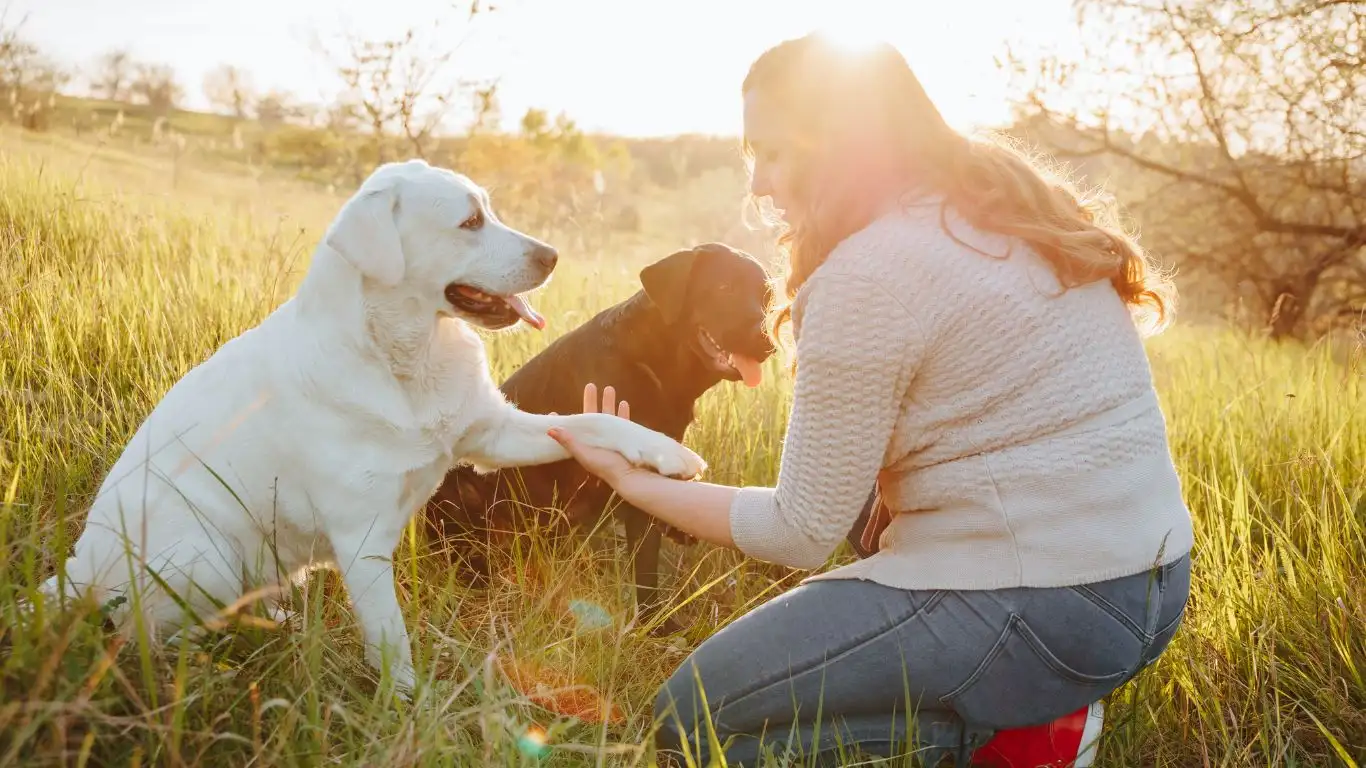
References and Disclaimer
The information provided in this article is based on my professional experience and knowledge as a Canine-Assisted Therapy Trainer. However, every dog is different, and training methods may vary depending on the individual dog’s needs. If your dog’s barking continues despite consistent training, or if you notice any significant changes in behavior, I strongly recommend seeking professional advice from a certified trainer or behaviorist.
For further resources on dog training and behavior, consider visiting reputable sites such as AKC for tips and advice on dealing with barking and other behavioral issues.
Disclaimer: The content in this article is meant for informational purposes only and should not replace professional veterinary or behavioral advice. Always consult a professional if you have concerns about your dog’s health or behavior.


